Top 8 Best Guitar Wireless Systems – The Guide, The Recommendations, The Reviews!
We may also earn commissions on purchases from other retail websites.
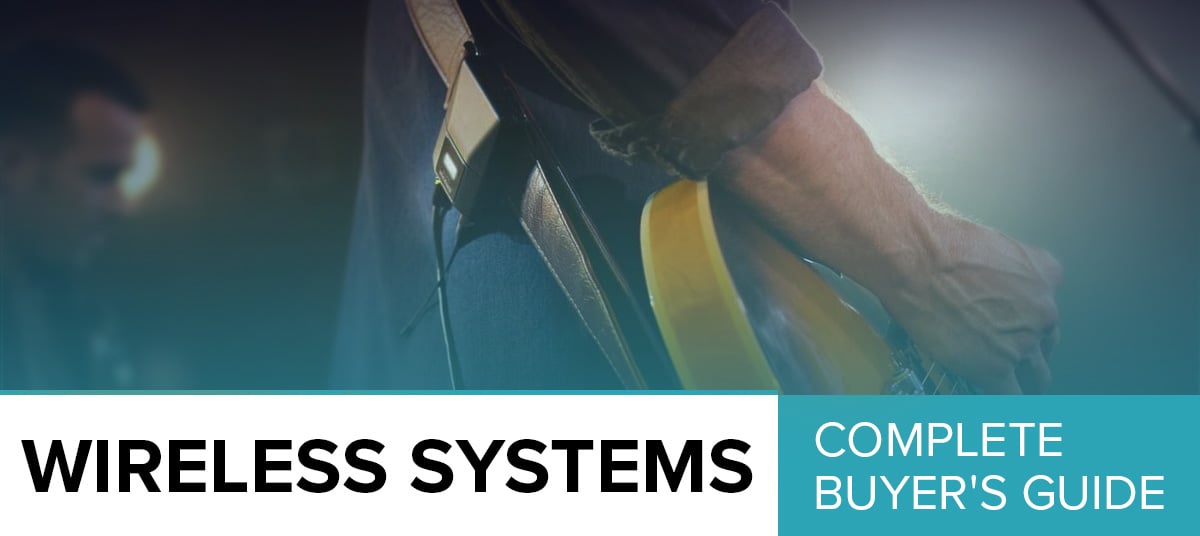
The essence of these devices is that they allow you to finally ditch those cables during performance, and connect your guitar, effects and amp through wireless technology.
Top 8 Best Guitar Wireless Systems
| Image | Guitar Amplifier / Rating | Summary | Check Price |
|---|---|---|---|
+ -  | Line 6 Relay G50 Total of 5.00/5 | Clear, loud and proud. | |
+ -  | AKG WMS 40 Mini Total of 4.67/5 | Highly versatile package with a top-notch price tag. | |
+ -  | Joyo JW-01 Total of 4.47/5 | Lowest priced item on the entire list here, yet it still offers a solid performance. | |
+ -  | Audio Technica System 8 ATW-801/G-T8 Total of 4.80/5 | Advanced dipole antenna that grants it a surprisingly wide operating range. | |
+ -  | Line 6 Relay G30 Total of 4.85/5 | This fella has everything the G50 has. | |
+ - 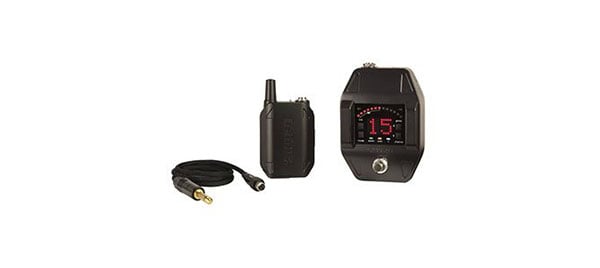 | Shure GLXD16 Total of 5.00/5 | This item showcases the company’s domination in terms of sonic excellence. | |
+ -  | Nady U-1100 GT Total of 4.92/5 | Offers quality that’s worth at least 20% more than the listed price tag. | |
+ -  | Shure PGXD14 Total of 4.90/5 | This is Shure we’re looking at, so needless to say, sonic quality is spectacular. |
So the main thing about these devices is convenience. They do not improve your tone in any way, but they do cut out the cable unreliability out of the equation. The only thing you have to worry about here is that the device's batteries are fully charged, and that's about it.
Anyhow, we took the liberty of diving deep into today's market in an attempt to find the best guitar wireless system money can buy. We looked through a variety of price ranges and other criteria, and firmly believe that each of the eight items listed below is worthy of the flattering title in its own way. Without any more ado, the goods patiently await below!
Line 6 Relay G50
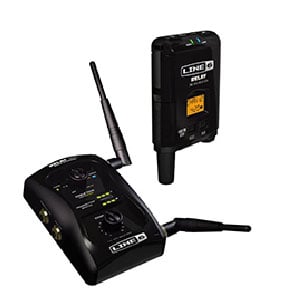
| Controls: |  |
| Features: |  |
| Performance: |  |
| Value: |  |
Representing the high-end domain, the Relay G50 model from Line 6, a highly professional device with a very impressive range of 200 feet (61 m) and a broad frequency range.
The device is compander-free, meaning that it doesn’t touch – or compress, god forbid – your tone in any manner. It’s clear, loud and proud. In case you want to use cables too, you actually can switch between cable and wireless regime.
Note that this is an item for professionals playing larger venues, and while we thoroughly recommend it as one of the best wireless guitar systems, it seems as a bit of an overkill for musicians still doing smaller clubs.
AKG WMS 40 Mini
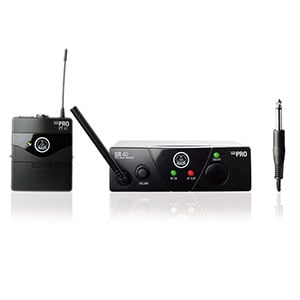
| Controls: |  |
| Features: |  |
| Performance: |  |
| Value: |  |
Boasting a “small size, BIG sound” label, the AKG WMS 40 Mini is a great budget-friendly option that can actually fit the needs of players of all skill levels and bands of all sizes.
Sure, if you play big venues, maybe you should consider something a tad more high-end, but the majority of users are bound to be quite please with the performance this fella has to offer. Overall, this is a highly versatile package with a top-notch price tag.
It’s one of the best-selling items of the entire niche, which is a strong indicator that the manufacturer is doing something right. A few minor complaints (read the full review for details), but we simply cannot single out any major drawbacks for the listed price.
Joyo JW-01
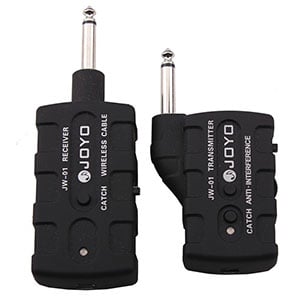
| Controls: |  |
| Features: |  |
| Performance: |  |
| Value: |  |
As one of the top contestants for the title of the best cheap guitar wireless system, the JW-01 from Joyo is the lowest priced item on the entire list here, yet it still offers a solid performance.
Based on Bluetooth digital technology, this is a very simple device that does the job well in small clubs. Realistically, it creates problems when you separate the two parts too much, but for smaller gigs it’ll work just fine.
We were very careful when testing out cheap products of this domain, and honestly we have discarded quite a few of them for being utter crap. Well, the JW-01 is one of the few champions that made the cut. It’s solid overall, amazing for the listed price.
Audio Technica System 8 ATW-801/G-T8
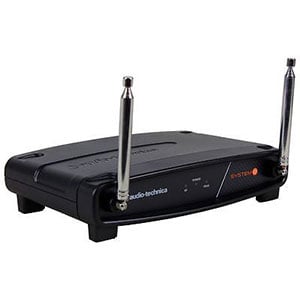
| Controls: |  |
| Features: |  |
| Performance: |  |
| Value: |  |
As another item boasting solid value for money, the Audio Technica System 8 utilizes an advanced dipole antenna that grants it a surprisingly wide operating range and reliable performance.
The battery life is also quite impressive, and so is durability. If you want the best guitar wireless system under $100, this one is definitely a solid choice. It operates with zero lag or major sonic crackle and interference and is actually quite easy to control.
Tweaks and knobs have been reduced to a minimum, as they should be with this type of devices. For the listed price, we are 100 percent satisfied.
Line 6 Relay G30
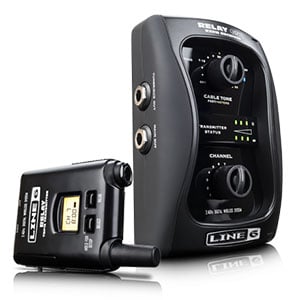
| Controls: |  |
| Features: |  |
| Performance: |  |
| Value: |  |
If the Relay G50 from Line 6 has a bit of a too steep price tag for you, but you still like what the company has in store, we say give the G30 a spin! With a range of 100 feet (30 m), this fella has everything the G50 has, but in a smaller package.
So the range is lower, signal strength is lower, and the majority of factors have sort of been cut in half, including price.
The device is quite simple to use, with 6 available channels and an on-board transmitter, receiver and all other required accessories such as cable, power supply and a set of batteries.
Shure GLXD16
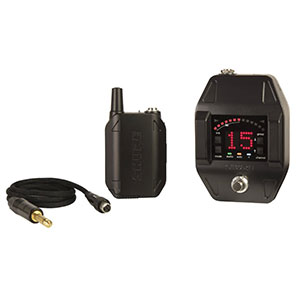
| Controls: |  |
| Features: |  |
| Performance: |  |
| Value: |  |
Shifting things into overdrive, we are once again in the high-end realm and boy what a product we have! Coming from the renowned microphone manufacturer Shure, this item showcases the company’s domination in terms of sonic excellence with anything that’s mic-related.
But unlike the company’s top-level microphones that boast a low-key price tag, this is one pricey fella. However, it’s still worth every dime. The sonic clarity is through the roof, as well as range, reliability and durability.
Even at the edge of the device’s 200 feet (60 m) range, you will get zero crackle and a performance that’s as strong as when you’re an inch from the emitter.
Nady U-1100 GT
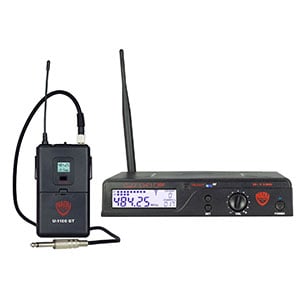
| Controls: |  |
| Features: |  |
| Performance: |  |
| Value: |  |
Now this one is an interesting item! We are always pleased to encounter hidden gems, and this one happens to be it. Nady is hardly a household name like Shure or Line 6, but that happens to be what’s great about it.
This package offers quality that’s worth at least 20% more than the listed price tag, and we believe that the reason behind that is the fact that the company has to lower their prices to attain their share of the market, which is something you should most definitely use.
We are looking at a whopping operating range of 500 feet (152 m), a set of 100 selectable UHF frequencies, as well as sophisticated IF filtering for smooth operation free of audio interference. Check this one out, you’ll be surprised!
Shure PGXD14
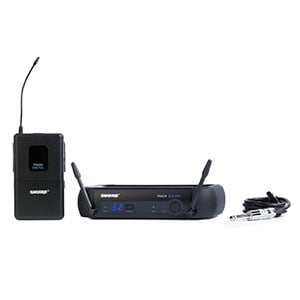
| Controls: |  |
| Features: |  |
| Performance: |  |
| Value: |  |
We’ll wrap things up with another pro-level item from Shure – the slightly more affordable PGXD14.
The package includes a very rugged transmitter that firms super tightly onto your instrument, so if you move and jump around onstage a lot, this system is absolutely worthy of your consideration.
The item will give you 200 feet (61 m) of wireless freedom and the ability to be connected with guitar, bass or any other 1/4-inch line-level instrument. This is Shure we’re looking at, so needless to say, sonic quality is spectacular.
Types of guitar wireless systems
Although wireless systems might seem like somewhat basic pieces of gear to some users, they are actually quite intricate. They can be differentiated based on a variety of criteria, but it essentially comes down to three basic types of these devices: VHF, UHF and digital systems. So let's see what they're all about.
VHF systems are old-school stuff and they utilize the same frequencies as radio and TV devices, which range between 30 MHz and 300 MHz. While they are most definitely on the cheaper side of the spectrum, these systems are not recommended by the majority of express as they are by far the most susceptible to audio interference, making them the most unreliable type.
Further on up the road, UHF systems are more accessible, reliable and common in the world of music. They utilize TV frequencies in the 300 MHz to 3 GHz spectrum, and while they are also limited by a variety of UHF frequency regulations, they still pack just about everything a guitar player needs these days.
Finally, representing the modern era, we have the digital wireless systems. These bad boys run on the same frequencies as today's Wi-Fi routers, which makes them the most reliable and effective. They are not susceptible to signal interference at all, meaning you can rely on them way more than on your plain ole cable. Needless to say, this nifty little feature made them an industry staple and one of the most sought out types of systems on today's market.
What to look for when buying a guitar wireless system
Arguably the most crucial thing to pay attention to when heading out to buy a wireless system for your guitar is jotting down your exact needs. Some of the questions that you might want to answer right now are: How big are the venues you play at? Do you have room on your pedalboard? How often do you play at the same venue?
Depending on these criteria we have several suggestions – go for basic UHF systems if you play smaller venues, you won't need much else; go for a stomp-box receiver if you have pedalboard room; go for a digital system if your venues are large or if you're switching venues and audio environments often.
Apart from that, you should look at what the system offers and how it suits your needs – if you don't need a 500-foot range, don't pay extra money for it; if you don't need a whole bunch of channels, don't pay extra for that either.
But generally, don't buy items that offer what you need as their very limit. For example, if you need a 60-foot range, don't buy a system that has a listed range of 60 feet, go with 100. You need to have these devices constantly in their zone of optimal operation, and that means no limit stretching.
And always remember – unlike guitar cables, wireless system are no plug-n-play gizmos. Even the finest models will fail you if they are not properly set up, so take your time to study them thoroughly and understand their limits.
What does a wireless guitar system do?
Alright, let's cover this frequently asked question as well. A wireless guitar system is a device that makes a connection cable obsolete. It connects your instrument with an amp through wireless technology, turning your playing environment into a much more user-friendly surrounding. So essentially, the key difference is the way the signal is transmitted.
One the good side, you won't get tangled up in your cables, you won't step on them and unplug yourself or your bandmate by accident, and you won't a wireless system dying on you the way cables sometimes do.
As far as downers go, these systems are battery-driven, meaning that you will have to keep your batteries in check and make sure they are always sufficiently charged. Overall, polls have shown that the vast majority of players finds wireless systems more reliable and convenient.
Components of a wireless guitar system
There are three key components of any guitar wireless system: a transmitter, a receiver, and an input device. In this case, an input device is the gizmo that produces the sound, or a guitar.
A transmitter is the guy in charge of managing the “conversation” between the audio input – or a guitar – and the sonic output, or the amp. It transmits the signal and allows you to deliver the groove.
Finally, a receiver has been added to the mix to pick up the signal emitted by a transmitter and transfer it back to pure audio signal.
Extra features of guitar wireless systems you should know about
As far as additional features of wireless systems go, many tend to point out that these devices don't actually have a whole lot of extra stuff to offer and that it's all about the signal chain. But they're a tad wrong, because a string of notable functions does exist, and we'd like to dissect it for ya.
First of all, there's the automatic frequency selection. This is a rather useful option that grants the device an ability to instantly locate the nearest clear channel and hook up with it.
Additionally, there's the frequency carrier range, a feature that indicates which frequencies is your unit operating on.
Then there's the frequency response, a tool for dictating the low and high frequencies that the device can handle. Finally, there's an interface lock, a feature that locks the input settings on your body pack so it doesn't happen that you change them accidentally or on even purpose. It is worth noting that the majority of units comes with a string of pre-programmed frequencies per group.
Do guitar wireless systems have better sound quality than cables?
Yes, they most definitely do. The main reason behind that is the so-called “compander,” or a type of electronic circuit featured in analog wireless microphone systems to maximize dynamic range and minimize noise. In the transmitter, the sound signal gets compressed and can lead to such audio effects as the “pumping” or “breathing,” making a wireless system sound significantly different from standard cables.
How to use effects with guitar wireless systems?
This is a frequent question, and a valid one. The way it typically goes is that the instrument's output is connected to a wireless transmitter input, and RF connection from the transmitter goes to the wireless receiver. Also, receiver output gets connected with first effect pedal's input, and the last effect pedal's output goes to the amp input.
However, this arrangement creates a potential problem since the receiver's audio output has different electronic features from the instrument's audio output. This leads to the effects pedals sounding different with wireless guitar connection than with a standard cable connection.
So what you should do first and foremost is to never put your guitar effects before the wireless transmitter. This way, you will secure better audio quality and performance rate. And if you're worrying about damaging any of the devices in your signal chain due to wrong positioning, have no worries, as each of the things we're talking about here only affect the sound, and not the devices.
How to boost a performance of a wireless guitar system?
While specs and build quality are definitely among key factors that set good devices apart from the bad ones, a variety of factors not related to your system can interfere with the sound and given an impression that the system is worse than it actually is. Likewise, setting up a proper environment will secure the best possible performance. In a nutshell, here’s what you should do:
– Remove unnecessary and unwanted objects caught within the line of site between the device's transmitter and receiver. While these thing cannot stop your signal in its tracks, they certainly can't help. Therefore, don't put the transmitter behind the amp or your bandmates or instruments such as keyboard.
– Play around your area to detect weak spots. Signal waves have a tendency to bounce off objects around their way, resulting in weaker signal power at certain spots. It is up to you to detect those weak spots and avoid them at all cost.
– Stay close to your transmitter and keep your batteries charged. Just don't push things too far. If your device has a range of 200 feet, just stick to those 100 feet. Likewise, if your battery is at 20 percent, get a new set of batteries or recharge that one somehow. You need to keep it safe.
How much money should I spend on a good wireless system?
That one depends on whether your question is “How much should I spend on a good wireless guitar system?” or “How much should I spend on a good cheap wireless system?”. Decent items can be fetched for as low as $100, but if you really want to go top-level, we believe that $350 is a minimum spending budget. Of course, feel free to look around and see which of the listed items feels the best for you.
Do I need to get any additional paid accessories with a wireless guitar system?
Not a whole bunch of them, no. When compared to guitar effects or guitars themselves, wireless system are very much low-key in this section. All you'll need is a cable, a power supply for the base, and a set of batteries for the mobile part of the system, and you're good to go!
New vs. used wireless guitar system
New one, for sure. In our experience, there's a lot of things that can be damaged on a wireless system due to improper use, and unless you really know that the second-hand item you're looking at was not damaged in any way, we say stick to the new ones. Even the best systems can have their signal chain screwed up from physical damage, and it is of utmost importance that you don't get any crackle of poor sonic transmission.
Conclusion
And this steadily brings us to the very end of our little journey. We hope you enjoyed the ride and the products we had in store for you, make sure to subscribe to our newsletter and stay in touch on site to keep up with the latest best deals in the realm of music instruments and gear. Right now, it comes down to you jotting down your personal needs, preferences, expectations and of course available spending budget, and singling out the product you believe is your perfect match.
The great thing about listed items here is that they are all worthy of the title of the best guitar wireless system in their respective price range, and they're all purchases you simply can't regret making. Take your time, look around, and treat yourself with one of these puppies as early as today!




Reader Interactions